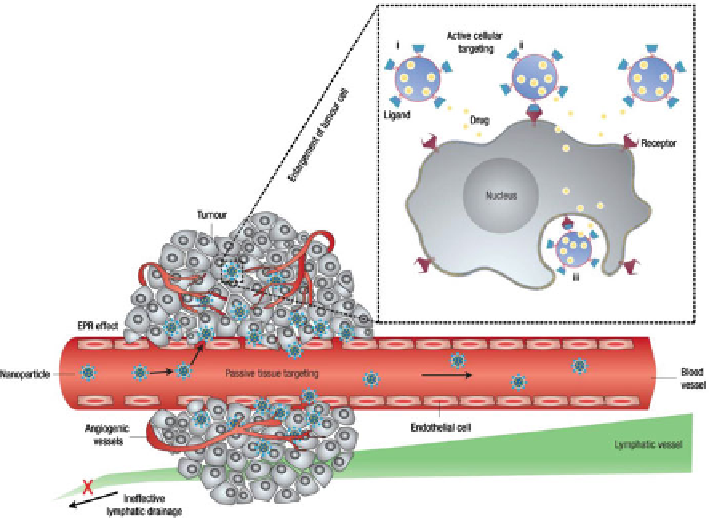Biology Reference
In-Depth Information
walls of the sinusoids that form part of the MPS. As an alternative approach, active
targeting to liver hepatocytes can be achieved by including receptor specific anti-
bodies, ligands or ligand mimetics into the nanocarrier design.
6.4
Nanoparticle and Nano-Conjugate-Based
Delivery Strategies
Nanocarrier-based approaches typically involve the supramolecular assembly of a
carrier, which may include one or more targeting moieties that can deliver drugs
and/or imaging agents in a cell- or tissue-specific manner (Fig.
6.1
). Typical nano-
carriers may be constructed from lipids, proteins, carbohydrates or synthetic poly-
mers [
27,
41
]. Recent advances in the engineering of devices at the nanoscale have
led to the development of new platform particle-based technologies. Inorganic
nanoparticles may be comprised of gold, silver, silicon, silica or iron oxide (including
Fig. 6.1
Passive and active tumour targeting. Passive tissue targeting is achieved by extravasation
of nanoparticles through increased permeability of the tumour vasculature and ineffective lym-
phatic drainage (EPR effect). Active cellular targeting (inset) can be achieved by functionalising
the surface of nanoparticles with ligands that promote cell-specific recognition and binding. The
nanoparticles can (i) release their contents in close proximity to the target cells; (ii) attach to the
membrane of the cell and act as an extracellular sustained-release drug depot; or (iii) internalise
into the cell. Reprinted with permission from [
27
] Copyright 2007 Nature Nanotechnology

Search WWH ::

Custom Search